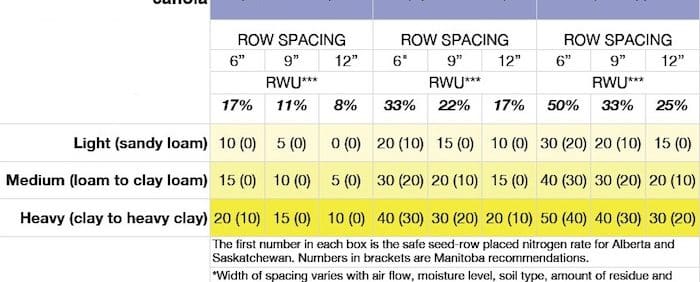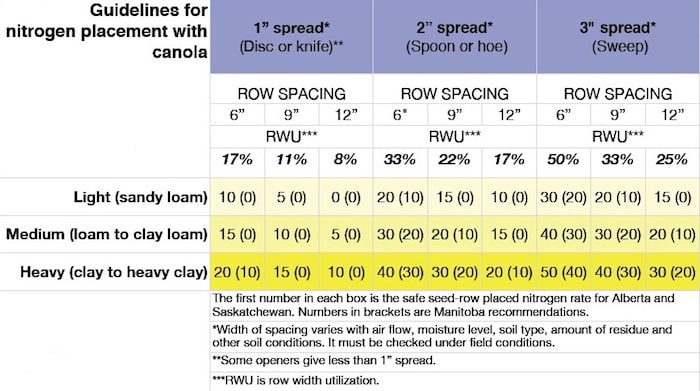The safest method for seed-placed fertilizer is to put nothing with the seed. However, with low-medium soil test results for phosphate, it’s often beneficial to put ammonium phosphate with the seed at a safe rate, and put all other fertilizers in a band away from the seed row.
When using only one fertilizer blend for a field — say 100-25-0-20, for example — growers are probably better off putting all of it in a band away from the seed row. Safe levels of nitrogen in the seed row are very low, which means the safe amount of this blend placed in the seed row would result in such a low amount of phosphate as to be almost useless from a crop establishment point of view. Most seeds would not have access to a phosphate prill, and are more likely to encounter a nitrogen prill, which would be more harm than good at that stage of the season.
Test your safe placement. Growers wondering about the stand establishment implications of their seed-placed fertilizer blend could turn off the fertilizer runs for a 100 feet or so in every field. Mark these areas and then go back and do plant counts early in the season to see the effect.
Further reading:
More good tips on nitrogen specifically: Safe rates of seed-placed nitrogen
Seed right the first time.
Try SDSU’s seed-placed fertilizer decision aid
Read more on the risks of seed-placed fertilizer.
Read the article on page 9 in this Canola Digest for study results on placing AS and MAP together with canola seed
Are we mining soil phosphorus?
Top dressing is an option if you need to apply sulphur, but don’t want to add AS to the seed row. Read more.
Three fertility questions for seeding time.


